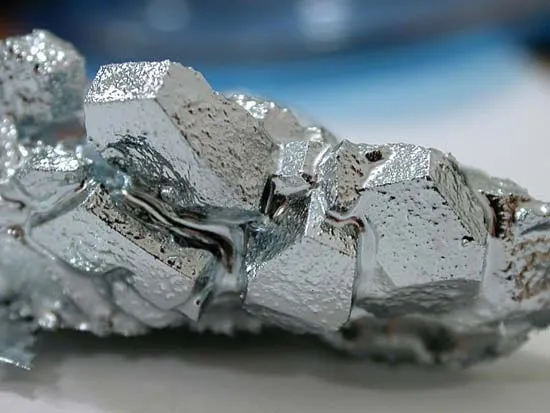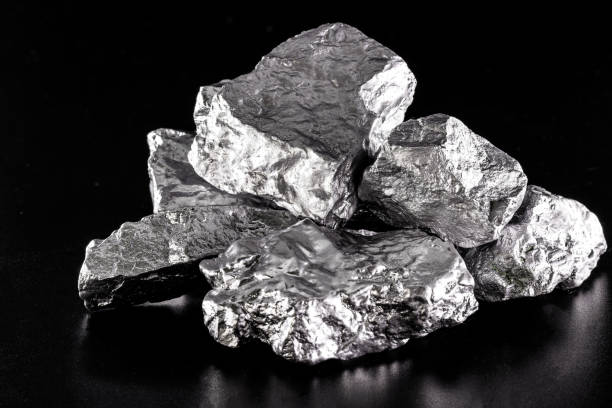International Relations
China's Export Controls on Gallium and Germanium
- 11 Jul 2023
- 7 min read
For Prelims: Gallium, Germanium, semiconductor, Initiative on Critical and Emerging Technology (iCET)
For Mains: Impact of China's export controls, Significance of semiconductors in the global market
Why in News?
China has recently announced that it will impose export controls on gallium and germanium, which are essential for semiconductor manufacturing, starting from August 1, 2023.
- This action is seen as a response to export controls implemented by the United States, Japan, and the Netherlands, who express national security concerns and accuse China of military use and human rights violations.
- China denies these allegations, asserting that its export controls aim to safeguard global industrial and supply chain stability, without singling out any country.
What are Gallium and Germanium?
- Gallium:
- It is a soft, silvery-white metal that is liquid near room temperature.
- It is not found as a free element and is only present in small quantities in certain minerals, such as zinc ores and bauxite.
- Gallium is used to make gallium arsenide, which is a core substrate for semiconductors.
- It is utilized in the production of semiconductor wafers, integrated circuits, mobile and satellite communications (in chipsets), and LEDs (in displays).
- Gallium also finds applications in automotive and lighting industries, as well as in sensors for avionic, space, and defense systems.
- Germanium:
- It is a lustrous, hard, silvery-white semi-metal with a crystal structure similar to a diamond.
- Germanium is used in various electronic and optical applications.
- It is commonly used in fiber-optic cables and infrared imaging devices.
- Germanium enhances the ability to operate weapon systems in harsh conditions.
- It is also used in solar cells due to its heat resistance and higher energy conversion efficiency.
- Note:
- Gallium and germanium, both listed on India's recently released critical mineral list by the Ministry of Mines, are also included in the European Union's list of critical raw materials, which are recognized as crucial to Europe's economy.
- Additionally, these elements are considered strategic resources by the United States and Japan.
- Gallium and germanium, both listed on India's recently released critical mineral list by the Ministry of Mines, are also included in the European Union's list of critical raw materials, which are recognized as crucial to Europe's economy.
How does China Dominate the Global Supply of these Raw Materials?
- China is the world's largest producer and exporter of gallium and germanium.
- According to the European industry body, Critical Raw Materials Alliance (CRMA), China accounted for 80% of global gallium production and 60% of global germanium production.
- Abundant reserves of gallium and germanium in China contribute to its dominant position in the market.
- China imports gallium and germanium from countries like Kazakhstan, Russia, and Canada to supplement its domestic supply.
- China has a strong industrial base for processing and refining gallium and germanium into high-purity products.
- The country benefits from low labor costs, favorable policies, and a large domestic market, giving it a competitive advantage in the global supply chain.
How will China’s Export Controls Affect the Market?
- India:
- The Chinese export controls on gallium and germanium are expected to have a short-term impact on India and its industries.
- India currently imports all chips, and the market is estimated to touch USD100 billion by 2025 from USD 24 billion now. Disruption in immediate supply chains may result in increased prices and limited availability of these raw materials in India.
- India's chip-making plans could be affected due to the dependence on imports of gallium and germanium.
- Long-term consequences for India's semiconductor industry depend on alternative supply sources and domestic production capabilities.
- Strategic partnerships like the India-U.S. Initiative on Critical and Emerging Technology (iCET) may play a role in ensuring a reliable supply chain.
- Deloitte India suggests exploring waste recovery from zinc and alumina production as a potential source of gallium and germanium.
- India has an opportunity to develop domestic capabilities and diversify its supply chain by focusing on substitutes such as indium and silicon.
- Global:
- The restrictions may lead to an increase in prices of gallium and germanium in the global market as supply becomes limited.
- Countries and companies heavily dependent on Chinese supply may seek to diversify their sources of gallium and germanium to reduce their vulnerability to such export controls.
- Export controls by China could present opportunities for other countries or regions to increase their production and supply of gallium and germanium, potentially creating a more diversified market.
UPSC Civil Services Examination, Previous Year Questions (PYQs)
Q. Recently, there has been a concern over the short supply of a group of elements called ‘rare earth metals’. Why? (2012)
- China, which is the largest producer of these elements, has imposed some restrictions on their export.
- Other than China, Australia, Canada and Chile, these elements are not found in any country.
- Rare earth metals are essential for the manufacture of various kinds of electronic items and there is a growing demand for these elements.
Which of the statements given above is/are correct?
(a) 1 only
(b) 2 and 3 only
(c) 1 and 3 only
(d) 1, 2 and 3
Ans: (c)








